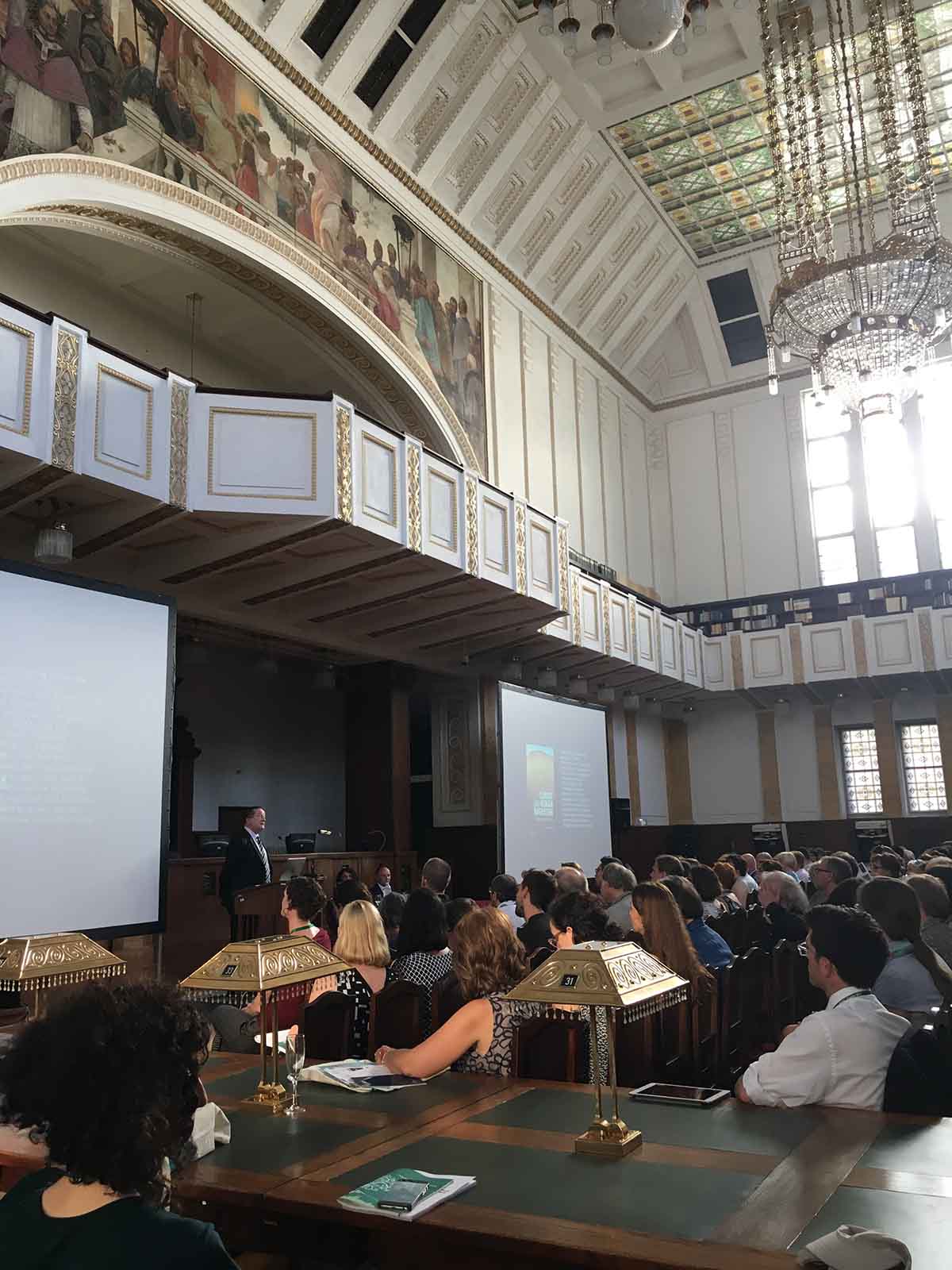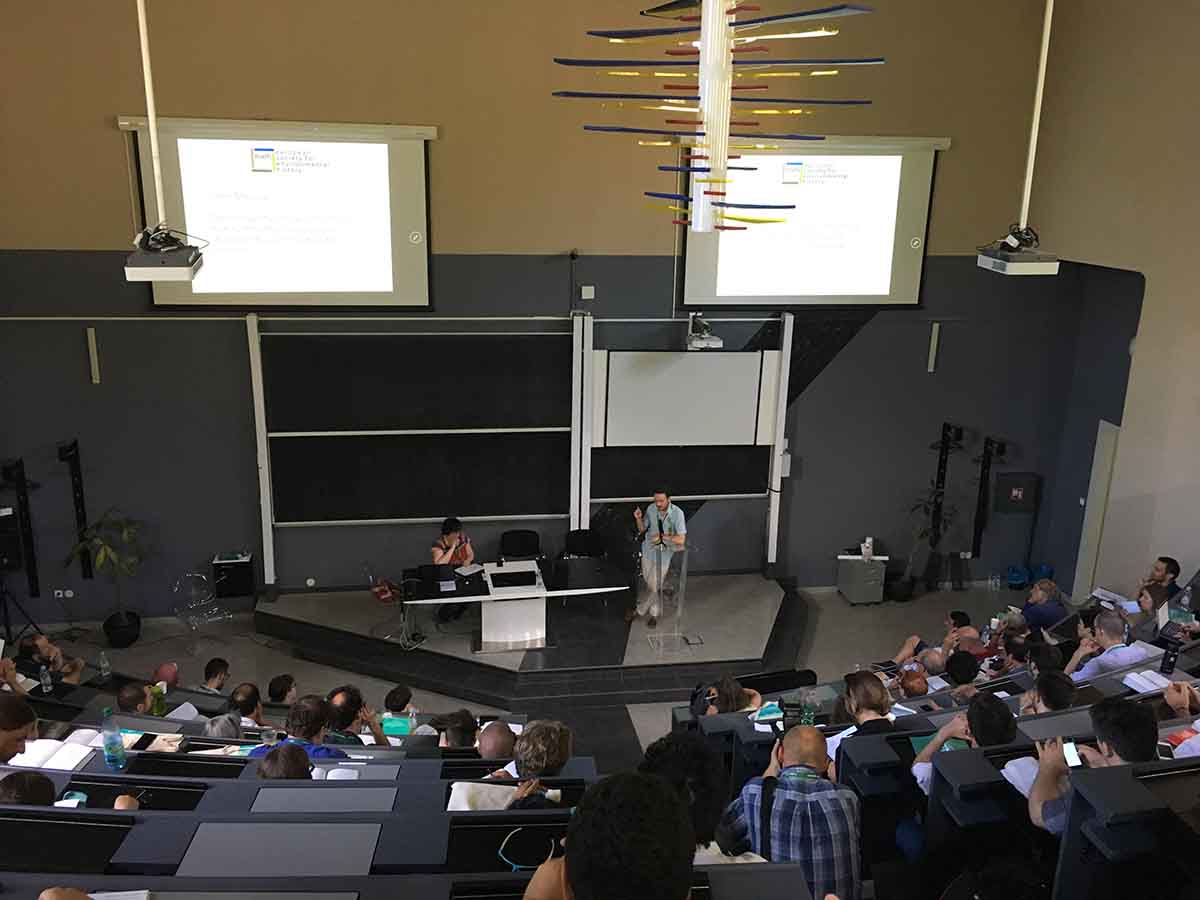Conference themes don’t always (or even typically) define their content. Whereas keynotes and panels organized by program committees generally adhere to them, other sessions and events or just as likely to ignore the themes entirely. This is part of the reason that I rarely remember them. Conference “character” is more often defined by location, socializing, and/or interesting papers. In some exceptional circumstances, conferences can even be defined by their weather (such as the extreme heat of ESEH in Versailles). Effective themes, however, can provide a backbone of connectedness and dialogue between and amongst the disparate sessions, events, and meetings throughout the conference. ESEH 2017 in Zagreb adhered to this second model. Although not always fluidly executed, the conference as a whole nevertheless consistently explored its theme of “Natures in Between: Environments in areas of contacts among states, economic systems, and religions.”

The two most explicit connections to these themes were drawn from the opening address and plenary roundtable about migration. Andrew Baldwin’s opening lecture provided a provocative (or to use his own word: uncomfortable) introduction to the theme. Ostensibly about climate migration, Baldwin’s talk became more of an anthropology of whiteness and the hypocrisy of post-racial narratives of migration. Baldwin had the fortune (or perhaps misfortune) of speaking on the first, and hottest day of the conference, in the gorgeous Croatian State Archives. Baldwin’s talk received mixed reviews. On the one hand, environmental historians found little of “environmental” significance in his talk (which was possibly the real source of people discomfort, rather than its racial subject matter). On the other hand, I, and I imagine others, appreciated Baldwin’s sort of iconoclasm and rejection of what has come to define “European” environmental history. European environmental history is heavily invested in theory, but far less in discourse and narrative analysis, both of which Baldwin drew heavily upon. As his talk revolved around forced movement of peoples, it absolutely fit the theme of the conference.
In retrospect, it shouldn’t have been surprising how migration and movement became the watchwords of the conference. Between refugee crises and their consequences in Europe and apprehensions about the devolving state of immigration in the US, historians already interested in borders and their transgression found plenty of material for contemporary comparison. In addition to Baldwin’s talk, the plenary roundtable on migrations was another case in point. Also like Baldwin’s talk, it received mixed reviews. Starting off the discussion, Marco Armeiro’s first pitch to the panelists was an (intentional?) softball, asking each to react to his provocation – that environmental historians have largely ignored migration as a subject. Naturally they disagreed, and all for valid reasons, though most also emphasized the need for greater emphasis in the future. Shen Hou’s comments were particularly well put, drawing primarily from the “classics” of EH literature (Dust Bowl, Changes in the Land), but leaving plenty of room for future contributions. The discussion only truly took off, however, when the mic was offered to the audience. Although the quality of answers were mixed, thoughtful, challenging questions redirected the discussion into new and arguably more productive and innovative directions. Thinking about migration across borders as a normative condition, for instance, and sedentism as the questions requiring an answer, or substituting corporations for nation states in our dialogue of migration pushed the audience and panelists to rethink their assuptions. Naturally, this discussion could have gone on far longer. Peter Coates, for example, was brought into the discussion largely based on his expertise on historic invasive species, and I would have loved to hear his take on the limits to the animal-human analogies he was encouraged to make. Likewise, the consequences of language and labeling of “refugees,” “migrants,” and “invasives.” Regardless of its shortcomings, the plenary was a useful thematic bookend that recalled topics and themes related to “contact” areas from the previous days’ sessions.
The most surprising development of the conference, however, was the “animistic turn” European environmental history seems to have taken over the last few years. Histories of animals (wolves, whales, cattle), animal movement (epizootics, bio-migrations) and non-human nature more broadly were conspicuous for the number of sessions devoted to them as well as their attendance. The experimental session on “more-than-human” storytelling had a packed house. It was an exercise in unstructured, team-brainstorming. Session leaders challenged groups of scholars to think through key methodological and epistemological questions about the nature of narrative storytelling, anthropomorphism/centrism, and agency. Although the intention was to de-center (at least temporarily) the human from historical thinking, it ultimately did the opposite. Thinking about “beyond-human” agency casts the significance of human action into even sharper relief. Its absence is clearly felt and significance expressed. This may be the single most useful contribution of this type of exercise.
In a certain sense, focusing on animals during the conference, in particular this exercise in non-human storytelling, were surprisingly appropriate subjects for this conference about borders and contact. Plenty of papers (my own included) dealt with historical subjects across state, economic, and religious borders. I found that the most interesting moments of the conference came when people crossed disciplinary borders (Baldwin), narrative borders (more-than-human panel) and made contact with the “Natures in Between” those spaces.



